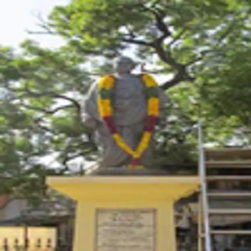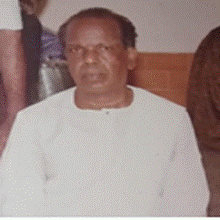PREVIOUS
Freedom Fighters from Tamil Nadu Part – 11
Freedom Fighters from Tamil Nadu Part – 11
(இதன் தமிழ் வடிவத்திற்கு இங்கே சொடுக்கவும்)
52. Dr. Swaminatha Sastri
Early Life and Education
- Birth and Family: Dr. Swaminatha Sastri was born in 1887 on Masimagam day in Kumbakonam, Tamil Nadu.
- His father was Vasudeva Sastri, and his mother was Lakshmi Ammal.
- Education: He graduated from Madras Medical College, where he received formal medical training.
Medical Practice and Social Service
- Medical Practice: He practiced medicine in Trichy, where he was known for treating the poor free of cost, demonstrating a commitment to social welfare.
- Support for Harijans: He extensively extended his medical services to Harijans (scheduled castes) and actively propagated social reforms including the fight against untouchability and widow remarriage.
Involvement in the Indian Independence Movement
- Arrests and Imprisonment: He was arrested on multiple occasions due to his active involvement in the freedom struggle. His health was significantly impacted by his repeated imprisonments.
- Medical Services in Jail: The British police requested him to provide medical treatment to prisoners while in jail, reflecting his continued commitment to service even under difficult conditions.
Family Contributions
- His wife, Kalyani Sastri, was also an active participant in the freedom movement.
- In 1932, she was arrested and imprisoned for her involvement in the Quit India Movement.
- She was known for her oratory skills; she inspired many young people to join the struggle for independence.
Leadership and Recognition
- Trichy Harijan Seva Sangh: He served as the first president of the Trichy Harijan Seva Sangh, an organization dedicated to the welfare of Harijans.
- Post-Independence Recognition: After independence, he was honored with a golden spinning wheel by Dr. Rajendra Prasad, then President of India, in recognition of his devoted service to the Harijan community.
Literary Contributions
- He published the Tamil magazine Kairattai, contributing to the dissemination of ideas and information related to social reforms and the independence movement.
Health and Death
- Health Decline: Continuous imprisonment and related hardships led to a deterioration in his health.
- Death: Dr. Swaminatha Sastri passed away on July 13, 1946.
53. Kallidaikurichi S. Subramaniya Iyer
Early Life and Education
- S. Subramaniya Iyer was born on September 15, 1917, in Kallidaikurichi village, Tirunelveli district, Tamil Nadu.
- His father was Sivarama Iyer and his mother was Kanakavalli Ammal.
- He studied up to the 10th standard, but his formal education was interrupted due to his involvement in the freedom struggle.
Activism and Role in the Freedom Movement
- Early Involvement: He joined the Indian national movement at a young age, demonstrating a strong commitment to the cause of Indian independence.
- Final Examination Incident: He was not allowed to write his final SSLC examination due to his vigorous anti-British speech at a meeting presided by V.O. Chidambaram Pillay.
Contributions to the Independence Movement
- Assistant Editor: He served as an assistant editor for the Tamil magazine ‘Sudandira Sangu’ from 1938 to 1940, which was known for its anti-British stance.
- Individual Civil Disobedience: He initiated Individual Civil Disobedience in Madras on January 22, 1941.
- He was arrested by Inspector Crosswell for his activities against the British government.
- Imprisonment (1941): He sentenced to six months of rigorous imprisonment for campaigning against the British and his role in the anti-government magazine.
- Quit India Movement: He was arrested again in 1942 for participating in the Quit India movement, resulting in imprisonment at Alipur Jail for one year.
Post-Independence Recognition
- Congress Committee Roles: He served in various positions within the Congress Committee at both state and district levels, contributing to the political and social development of the region.
- Tamra Patra (1972): He received the Tamra Patra from the Central Government in recognition of his contributions to the freedom struggle.
- Rotary Club Citation (1997): He was honored by the Rotary Club of Madras with a citation for his significant contributions to the independence movement.
Legacy and Death
- Death: Kallidaikurichi S. Subramaniya Iyer passed away on June 2, 1998.
54. Veera Raghava Naidu
Early Life and Education
- Veera Raghava Naidu born in Thillaiyadi, Nagappattinam district, Tamil Nadu.
- He studied until the 7th standard at Ayyasamy Senthamil Vidhyasala, Thillaiyadi.
Indian National Army Involvement
- He joined the Indian National Army in 1942 in Singapore and became a close friend of Netaji Subhash Chandra Bose.
- Initially working as a press foreman, he was later absorbed into the field propaganda unit.
Role in the Burma Front
- Veera Raghava Naidu was trained at Baktan camp and posted at Rangoon city.
- He was responsible for producing front-line code words, books, and INA secret papers at Foreman Printing, Lewis Street Mess.
Imprisonment
- When Rangoon became an open city, he was arrested at Lewis Street Mess and detained at Rangoon Central Jail from 15 May 1945 to 3 March 1946.
- After Netaji Bose's death, Veera Raghava Naidu returned to his native village.
Death:
- He passed away on 12 January 2012 in Thillaiyadi, Nagappattinam district.
Early Life
- I.B. Arangasamy Raja born in 1886 in Rajapalayam, Tamil Nadu, to Bhoopal Raj and Lakshmi Ammal.
Role in Home Rule Movement
- I.B. Arangasamy Raja was active in the Home Rule Movement started by Annie Besant in 1915, setting up a branch in Rajapalayam in 1916.
Activism and Arrests
- He led the boycott of foreign cotton goods and was arrested on 13 January 1922 under the Public Nuisance Act, sentenced to seven days of rigorous imprisonment in Srivilliputtur sub jail.
- He also played a crucial role in starting the Khadi Movement in Srivilliputhur in 1921.
Salt March and Later Life
- In 1930, I.B. Arangasamy Raja led a six-member team on a Salt March from Rajapalayam.
Death:
- He passed away on 7 May 1950.

56. Hanumanthan Patti S. Krishnaswamy Iyengar
Early Life
- Krishnaswamy Iyengar was born in 1883 at Hanumanthan Patti village, Madurai district, Tamil Nadu.
Freedom Movement Participation
- Krishnaswamy Iyengar was an influential orator and active participant in the Swadeshi movement in Bengal in 1907.
- He joined and actively participated in the Home Rule Movement started by Annie Besant.
Imprisonment and Recognition
- He was arrested multiple times by the British for his protests and was imprisoned in 1923 at Dindigul Jail for one year for violating public meeting restrictions.
- Muthuramalinga Thevar, a freedom fighter from Madurai, praised him as “A lion born in a Brahman family.”
Poetry and Legacy
- Krishnaswamy Iyengar was also a poet, writing songs related to nationalism.
57. Namakkal S.R. Hanumantha Rao
Early Life and Background
- S.R. Hanumantha Rao born in 1911 at Namakkal on Vijayadasami day.
- He was the son of “Thadapudal” S.R. Ragavendra Rao, an eminent lawyer.
Early Involvement in the Freedom Movement
- Hanumantha Rao first participated in the freedom movement at the age of 17.
- He was arrested during the Neill Statue Satyagraha in 1927, which aimed to demolish the statue of Neill, and was imprisoned at Berhampur Jail.
Subsequent Arrests and Activism
- S.R. Hanumantha Rao was again arrested for protesting to shut toddy shops, boycotting foreign goods, and participating in the Civil Disobedience Movement.
- He spent many years in Rasipuram Jail and was imprisoned in Bellari Jail in 1941 during the Individual Satyagraha.
Continued Struggle
- During the Quit India Movement in 1942, he was brutally attacked by police, sustaining severe injuries that left lasting marks on his face and body.
- His activism extended to the Khadi Movement, prohibition movement, and the abolition of untouchability.
Service and Legacy
- He served as a member of the Namakkal Congress Committee from 1932 to 1945.
58. V.M. Munuswamy
Early Life and Background
- V.M. Munuswamy was born on 2 October 1913 to World War I veterans Murukesan and Muthammal.
- Initially inclined towards Extremism, he was later inspired by Gandhi's non-violent ideology.
Contribution to the Freedom Movement
- Munuswamy was active in nationalist movements and was imprisoned for his activities.
- He was released after serving 3 years.
- In May 1930, he was jailed for 7 years in Vellore Fort Sub Jail for displaying slogans and conducting stage dramas against British rule.
Arrests and Imprisonment
- During the Quit India Movement in 1942, he was arrested again and imprisoned for 7 years in Vellore Fort Sub Jail along with other freedom fighters including Potti Sriramulu and Sundaresan Shanmugam.
Death
- V.M. Munuswamy passed away on 19 February 2008 at the age of 94.

-------------------------------------


